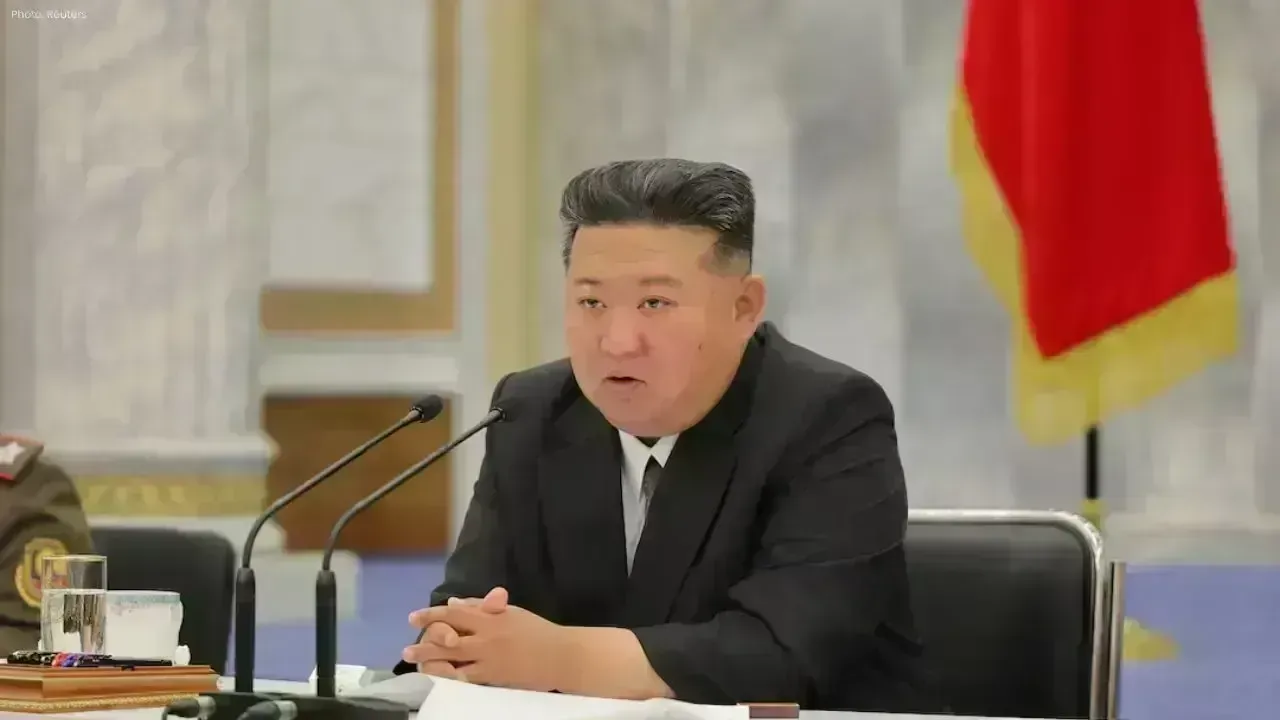You have not yet added any article to your bookmarks!

Join 10k+ people to get notified about new posts, news and tips.
Do not worry we don't spam!

Post by : Anis Farhan
When China makes changes at home, the entire region feels it. With its vast population, economic strength, and political influence, China’s internal policies act like stones dropped in a pond, sending ripples far beyond its own borders. Whether it is a new economic reform, a crackdown on industries, or a move in technology regulation, these decisions inevitably affect trade partners, political alignments, and even the daily lives of millions in neighboring countries. Understanding these dynamics is crucial to analyzing Asia’s future stability and prosperity.
China’s economic strategies are often designed with internal goals in mind—stability, growth, employment, and innovation. However, their outcomes extend far beyond its borders. For instance, when China invests heavily in renewable energy or high-tech sectors, it boosts demand for raw materials from countries such as Mongolia, Indonesia, and Myanmar. Likewise, industrial slowdowns inside China immediately hurt exporters in Southeast Asia who rely on selling commodities, components, and finished goods to Chinese markets.
The country’s commitment to “dual circulation”—boosting domestic consumption while maintaining a strong export base—reshapes supply chains across Asia. Nations like Vietnam and Bangladesh have benefitted from industries relocating out of China due to rising labor costs, yet they remain tied to Chinese capital, components, and logistics. This interdependence creates both opportunities and vulnerabilities for China’s neighbors.
China’s push for technological independence—especially in semiconductors, artificial intelligence, and telecommunications—has consequences across the region. As Beijing pours billions into research, other Asian countries are pressured to choose between adopting Chinese technology ecosystems or aligning with Western alternatives.
For example, the spread of Chinese digital platforms, payment systems, and 5G networks creates dependency for many neighboring countries. On one hand, this offers affordable technology and infrastructure; on the other, it raises questions about cybersecurity, surveillance, and sovereignty. Smaller nations like Laos and Cambodia often lean on Chinese digital solutions, while more advanced economies such as South Korea and Japan remain cautious and align more closely with Western standards.
China’s internal focus on security—both political and territorial—has a spillover effect on its neighbors. Stronger crackdowns in regions like Xinjiang or Hong Kong project an image of assertiveness that extends to foreign policy. This often translates into a more muscular presence in the South China Sea or along the Himalayan borders.
Countries such as Vietnam and the Philippines, directly affected by maritime disputes, must recalibrate their defense strategies. India, sharing one of the world’s longest and most sensitive borders with China, also feels the consequences of Beijing’s internal drive for security and national unity. Military tensions, infrastructure buildup along borders, and assertive naval patrols are not isolated acts but extensions of domestic policy that prioritize sovereignty and control.
China’s environmental decisions resonate strongly across Asia. For instance, policies regarding hydropower development on the Mekong River influence water security in downstream nations like Laos, Cambodia, Thailand, and Vietnam. Dams and water diversion projects, while crucial for China’s energy goals, disrupt ecosystems and livelihoods in these neighboring countries.
Similarly, China’s efforts to reduce coal consumption and invest in renewable energy reshape global demand for fossil fuels. This directly affects coal exporters such as Mongolia and Indonesia, who depend on Chinese markets. As Beijing transitions towards greener policies, neighboring economies must adjust to new trade patterns, often with little warning.
Internal Chinese policies on labor, education, and migration also ripple outward. The regulation of Chinese outbound tourism, for instance, has a profound effect on Southeast Asia’s economies, where millions depend on tourist flows. Sudden shifts, such as travel restrictions or new tax rules, can devastate local economies reliant on Chinese visitors.
Labor migration is another sensitive area. Policies that restrict or encourage Chinese workers abroad affect industries across Asia, from construction projects in Malaysia to mining in Africa, often mediated through Chinese state-linked firms. These shifts not only influence economic growth but also shape social dynamics in host countries, sometimes sparking political debates about dependency and sovereignty.
China’s domestic economic policies often collide with global pressures, especially when protectionism or industrial subsidies are involved. Trade disputes with the United States or Europe indirectly affect neighboring Asian economies, which are caught between competing blocs.
For example, when China prioritizes local tech giants through subsidies, it gives them an edge that often expands beyond borders, competing directly with companies in Japan, South Korea, and India. These competitive dynamics are not merely market-driven but are deeply rooted in domestic strategies designed to secure Chinese self-reliance.
Cultural shifts within China also influence its neighbors. Beijing’s promotion of Mandarin education abroad, the spread of Chinese films and digital platforms, and large-scale student exchanges are all driven by internal cultural policy goals. These policies aim to strengthen China’s image and cultural influence, but they often spark debates in neighboring countries about identity and independence.
For instance, in Southeast Asia, where Chinese diaspora communities have historically faced tensions, Beijing’s renewed cultural push can be both empowering and divisive. While cultural exchanges strengthen ties, they also raise questions about loyalty and influence, particularly in countries with fragile ethnic balances.
China’s domestic priorities frequently drive its foreign engagements. Initiatives like the Belt and Road were not only designed for global influence but also to address internal issues such as overcapacity in construction and manufacturing. By exporting labor, capital, and infrastructure expertise, China managed to stabilize industries at home while simultaneously extending its reach abroad.
Neighboring countries, from Pakistan to Myanmar, benefit from infrastructure development but also face challenges like debt sustainability, political influence, and environmental consequences. These projects illustrate how internal Chinese economic strategies are inseparably linked to regional geopolitics.
The cumulative effect of China’s internal policy shifts creates a domino effect in the region. Neighbors must constantly adapt—whether through diversifying trade partners, investing in security, or aligning with other global powers. For some, like Cambodia or Laos, close alignment with China offers economic lifelines. For others, like India or Vietnam, it presents a constant balancing act between cooperation and resistance.
In this sense, China’s domestic decisions are not isolated—they reshape the entire Asian geopolitical and economic order. The choices Beijing makes at home set the tone for relationships, alliances, and conflicts across its periphery.
China’s internal policies are more than just domestic strategies; they are levers that shift the balance of power across Asia. From trade and technology to security and culture, these decisions create ripples that neighbors cannot ignore. Whether through economic dependencies, security pressures, or cultural influence, Beijing’s domestic agenda shapes the very fabric of regional politics and economics. For neighboring countries, the challenge is clear: they must constantly anticipate and adapt to China’s internal transformations, finding ways to safeguard their sovereignty while embracing opportunities for growth.
This article is written for informational purposes only. It reflects ongoing developments and analysis based on current global and regional dynamics. The views presented are general insights and should not be considered as policy advice.










Thailand Defence Minister Joins Talks to End Deadly Border Clash
Thailand’s defence chief will join talks with Cambodia as border clashes stretch into a third week,

India Raises Alarm Over Fresh Attacks on Hindus in Bangladesh
India has condemned recent killings of Hindu men in Bangladesh, calling repeated attacks on minoriti

Sidharth Malhotra & Kiara Advani Celebrate Baby Saraayah’s 1st Christmas
Sidharth and Kiara share adorable moments of baby Saraayah’s first Christmas with festive décor and

South Korea Seeks 10-Year Jail Term for Former President Yoon Suk Yeol
South Korea’s special prosecutor demands 10 years for ex-President Yoon Suk Yeol on charges includin

Salman Khan’s Exclusive 60th Birthday Bash at Panvel Farmhouse
Salman Khan to celebrate his 60th birthday privately at Panvel farmhouse with family, friends, and a

Dhurandhar Breaks Records with Rs 1006 Cr, Becomes Bollywood’s Biggest Hit
Dhurandhar rakes in over Rs 1006 crore worldwide in 21 days, becoming Bollywood’s highest-grossing f